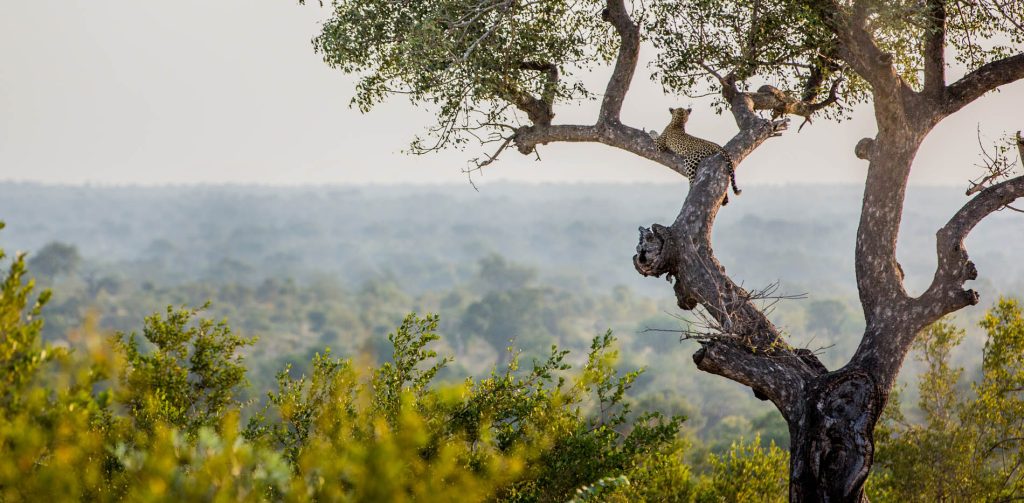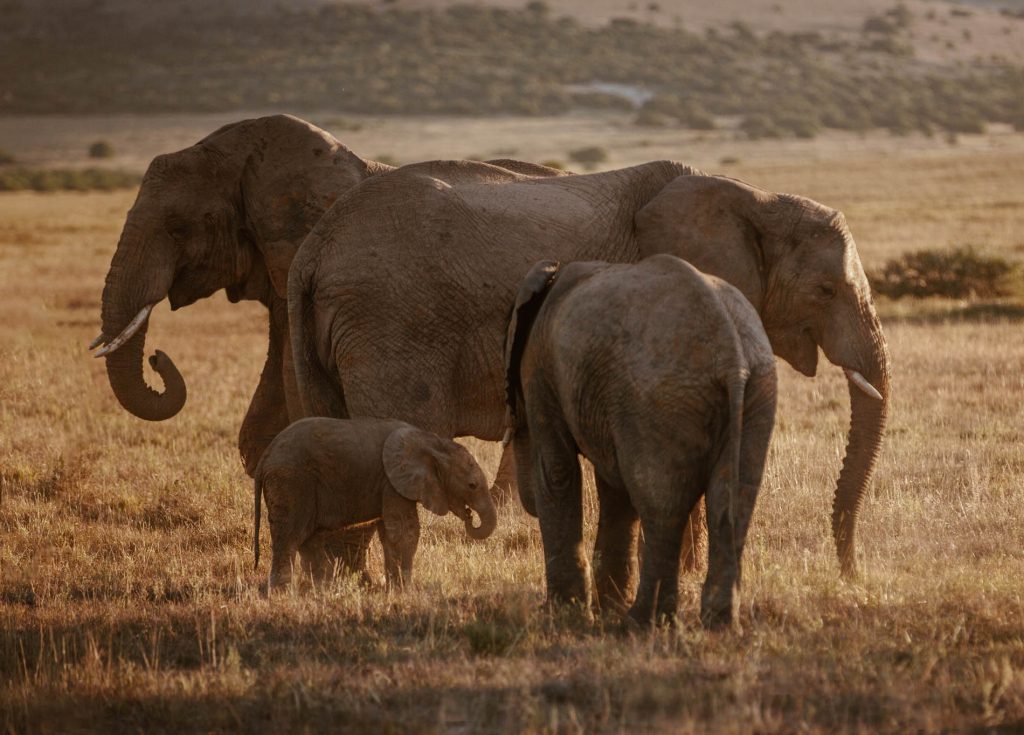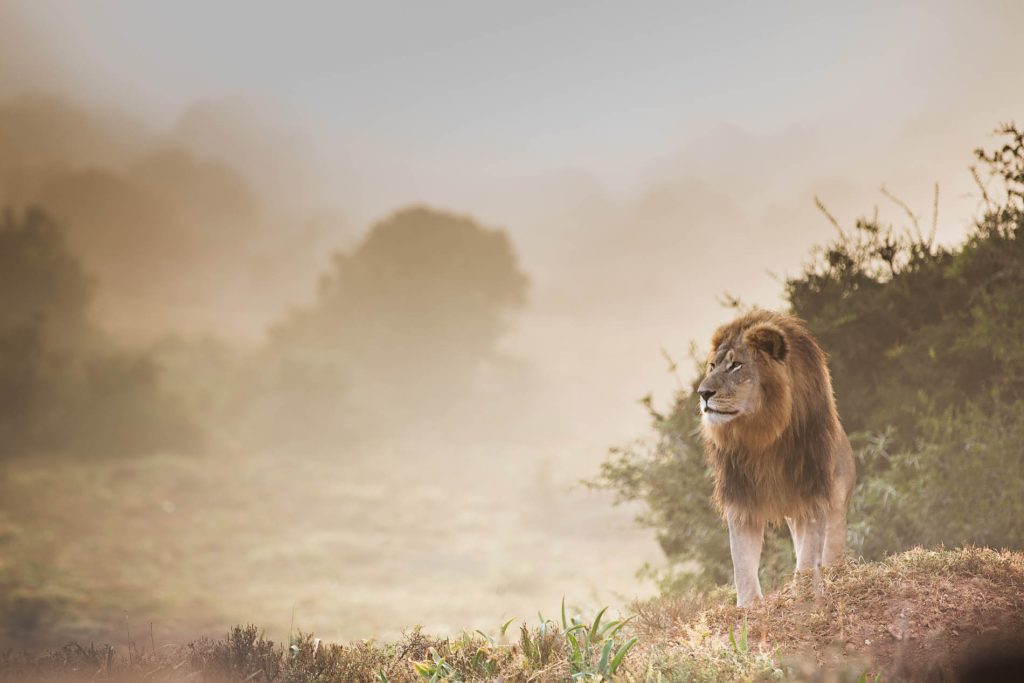A Knoxville Artist’s photographic journey through the wilds of South Africa
All around me, I could hear the rumbling. Twenty-one lions closed in on their fresh kill, a lone zebra, one by one tearing off their share. The rest prowled, snarling at each other, challenging for their place at the feast. Their voices were so deep that you could feel it as much as hear it. Every now and then, the rumbling would be punctuated by the snapping of bones, a hard crack I couldn’t help but flinch at.
Twenty-one lions and seven photographers, together in the African wilderness, all waiting for the perfect moment to strike – us with our cameras, them with their claws. If the lions caught our scent, the only thing standing between us and them were a few rangers’ rifles, and a charge of twenty-one lions might have been too much even for their expert skill.
My breath caught in my chest as I watched the lions work through their kill. It was exhilarating. It was awe-inspiring. It was terrifying.

This was my fourth trip to Africa as a photographer, but this one was different than the rest. On previous adventures, I’d always been on the job and felt the ticking clock over my shoulder. Our game drives always felt a bit rushed. We were having to cram an entire week’s worth of sights into a single day sometimes, which didn’t give me the time I needed to get the perfect shots I wanted as a photographer, the perfect shots I knew were out there.
This trip was about reconnecting with my camera, and about taking some time to slow down and remember where my place in the world was. There’d be no work here (and no tourists) to dictate my pace. It was only going to be me and six others, all photographers here on our own journeys, and we’d have two weeks to ourselves to do what we came here to do.
I knew once I touched down in Africa, I’d have to hit the ground running, so I forced myself to relax and rest as much as I could over the 37 hours I spent airborne. Flying in the Sky Suite on the first leg of my journey helped with that quite a bit.
It doesn’t matter how many times I visit; every time, it feels like a different planet altogether. The moon looks different. The plants look different. The animals look different. It’s a place where my life back home feels so small, and the world feels so vast. We spend our everyday lives worrying about the hustle and bustle, but when you get out here, it’s survival. You’re not so different than the lions and the zebras – eating, sleeping, surviving. Every time I step off the plane and take my first steps out into this new world, I feel completely transported and humbled.
On the Drive

There were some things that were the same every day in the tent camps where we spent the first half of our trip. Every morning you could count on your wake-up call being early, dark, and freezing cold. You’d get dressed, get your gear, and clamber onto the back of the game drivers’ open-top jeep. Breakfast wouldn’t be for at least an hour into the drive, not until we were already where we needed to be. That would also be your first chance to take a “bush pee”, as they were affectionately known.
You could also count on the beautiful sunrises. Each and every morning brought new colors into the sky, and the game drivers always knew where to find the best view. Over the course of the six-to-eight hour drive, you could be certain that you’d get to travel through awe-inspiring terrain; one morning the jeep is splashing across a river, the next it’s climbing up a craggy slope. You could count on seeing no shortage of amazing creatures and sights the likes of which you can only dream of back home. In short, you could count on every day being an adventure.
I was part of 18 game drives during my trip, and each made good on that promise of adventure, but even then a few stood out to me as truly special. Often, the night before a drive, we’d stay up and listen for the sounds of passing animals, and discuss with the guides what was out there for us to find the next day. One of the game drivers mentioned that there were cheetah nearby and they hadn’t been seen eating recently, meaning that they were due for a kill – a great shot if we could find it nearby. The next morning, that was our quest.
It was still early when we found them: a coalition of three cheetah, closing in on a herd of eland. Each eland, a spiral horned antelope, is nearly the size of a moose, yet they seemed so vulnerable as each cheetah silently approached, moving with eerie synchronicity. We all froze in place; we wouldn’t be the first to break the tension hanging in the air. Languid and sleek, the cheetah moved into position, and then, at some silent signal, their muscles tensed, and they pounced. The eland herd bolted, the cheetah growled and hurled themselves after them, trying to throw them to the ground. I wept as I followed the attack with my camera. It was in equal measure beautiful and haunting to bear witness.
Some moments, though, couldn’t be captured on camera. We sometimes went on game drives at night, when it was too dark to effectively get a picture. Those moments were only for us and our guides.
We had two sorts of guides on our trip. The trackers were locals who’d spent their lives on nearby farms; their knowledge of the land was intimate and traditional, handed down from generation to generation. The game drivers, on the other hand, had gone to school to study conservation and came to the profession academically. Both groups shared a passion for the land and the wildlife, however, and seeing that passion come to life was stirring.
It was on one of those night drives that we came to a sudden stop. Passing right in front of us was a pangolin, a “scaly anteater”. They’ve been seriously threatened by poaching and are a rare sight to see. It looked up at us, and I was stunned to see the jeep’s driver, one of our guides, begin to cry. He had never seen a pangolin with his own eyes before. I have no picture of that pangolin to share, only the memory of the light catching off its carapace and the tears of the game driver.

Remembering the Lion
The night before we set off in pursuit of the lions, we could hear them. Growls reverberated around the camp, first from one direction, then from another. Our guides, steadfast with their guns, kept our perimeter safe, but even then the sounds awakened in us a primal sense of fear, as well as excitement. The next day, we knew exactly what it was we needed to find.
Our jeep set off in the pre-dawn darkness, following in the direction the sounds of the lions’ passage had last been heard. The guides knew the right trails to follow to carry us to our quarry. We double-checked and triple-checked our equipment, making sure our cameras were ready to get that perfect shot. Often we were working with very long, high-zoom lenses to make sure we stayed out of the animals’ way, which meant the slightest hand movement or mistaken setting could ruin the image.
The zebra was already dead when we arrived, the first of the lions already at work. Lion prides have a hierarchy, with the leaders – the largest and most fearsome of their number – getting to feed first, while junior members of the pride compete for the scraps. We could not see them all yet. We took out our cameras and began to snap pictures of the scene, and slowly became aware of the other presences around us. The younger lions skulking forward to claim their shares. That’s when the rumbling began. The snap-crack of the lions’ teeth tearing through bone. That terrible sense that any rustle in the undergrowth would be followed by a pair of feline eyes, and then, a leap.
Yet watching the lions – both in that moment and in others – left marks on me far more than that momentary fear. A lion exudes confidence and courage; it’s a reminder to stand confidently in the face of our own challenges. The lion teaches patience in its quiet, coordinated strikes. They are testaments to the untamed beauty of nature, which even we, in our modern lives, still share in.
When I was born, National Geographic published a cover article about losing the rhino in Africa. They published statistics showing the decline in populations and pleaded with our society to do something. I looked through this magazine from 1984 and saw pictures of species of rhino that are no longer walking this Earth. These animals that I photographed, that pangolin that brought my guide to tears, may not be around by the time your children have children.
Moments like this, little moments, are what made Africa such a profound spiritual experience for me. When I came back to Tennessee, I came back with a renewed appreciation for my life and what I have. I’ll treasure these moments captured in my camera, and even more the moments captured only in the minds of myself and my companions, and hope that my next adventure to Africa is just as stirring as the last.

Comments are closed.